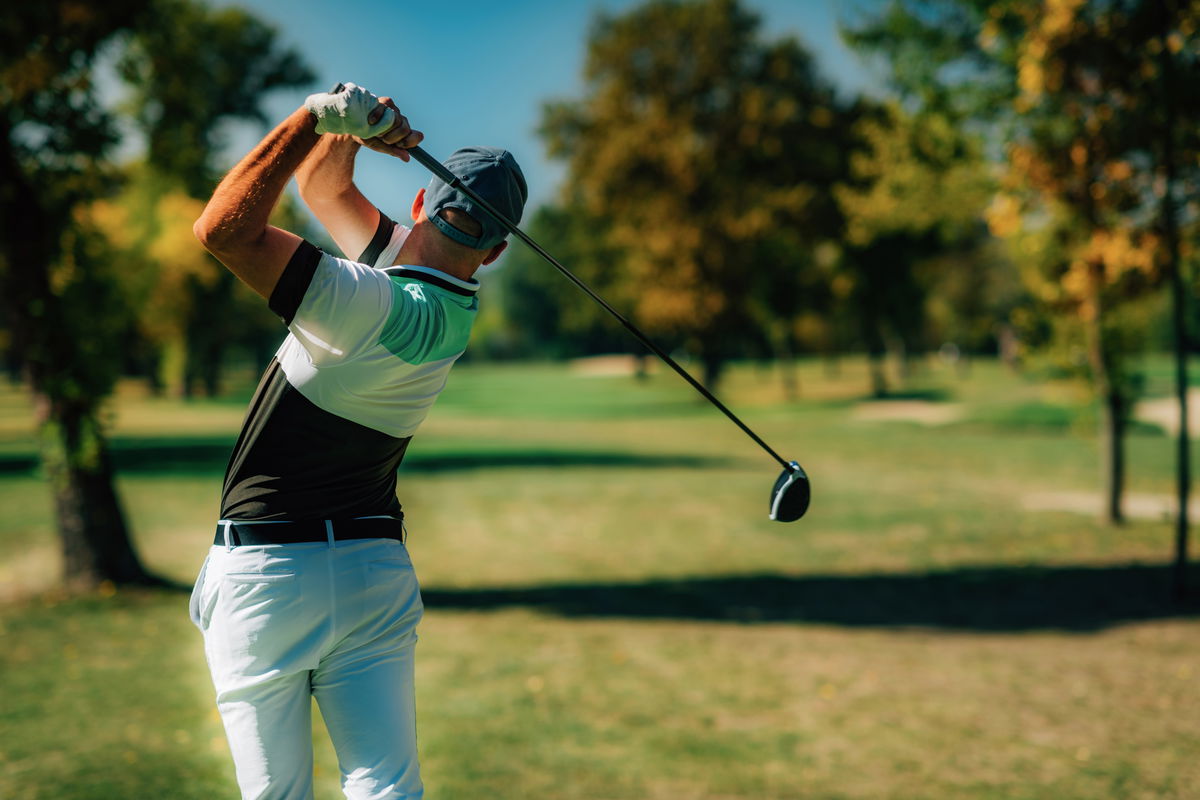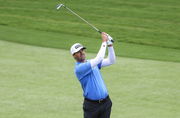
Imago
Golf swing with the driver golf club, shot from behind

Imago
Golf swing with the driver golf club, shot from behind
Everyone wants to improve their scores. The easiest way to do so is to be better at drives. Ensure you are hitting higher and longer drives. Yes, we know power and brawn play an important role in the swing’s trajectory, but achieving longer shots requires techniques more than anything. Stance and posture add to proper swing mechanics. But there are a few drills that elite golfers swear by to add power and distance to their swing.
Watch What’s Trending Now!
Top Stories
Phil Mickelson Backs Hollywood Actor Amid Criticism Surrounding His Daughter’s Pro Tour Debut

Victor Perez’s LIV Golf Move Doesn’t Sit Right With Golf Fans: ‘Another Victim’

Jordan Spieth Issues Career Advice to Justin Thomas After Back Surgery Announcement

Lydia Ko, Charley Hull Join LPGA Pro in Mourning Her Father’s Tragic Demise: ‘Sorry for Your Loss’

Iconic Augusta Hooters That John Daly Made Famous Gets Demolished Overnight

#1: Tilt and trail your upper body
This might sound old school, but posture and proper stance are key to an impactful swing. It is important to maintain your upper body slightly backward from the target. While you need to bend forward from your hips, you need to tilt the upper body back.
ADVERTISEMENT
For that, shift your shoulders so that your upper spine is somewhat arched away from the target. That creates the upward angle for the attack. Keep your trail (back) shoulder behind your head at address. This positions the lowest point of your swing just behind the golf ball, enabling you to swing up through impact. This posture helps generate more carry distance while reducing backspin.
Now that you have the proper stance for the swing, it’s time to set up the props.
ADVERTISEMENT
#2: Proper ball position
Just as nuanced as the stance, if not more, ball position can vastly alter the output of the game. Influencing the power and the launch trajectory of the ball in the air can mean the difference between a sure-shot birdie and a disappointing bogey. Needless to say, the proper position has been thoroughly studied, so you don’t have to.
To ensure consistent, square contact with the ball, place it just inside your lead foot. This forward placement allows your club to strike the ball on the upswing, maximizing launch angle and reducing backspin. Maintain the tilt of your shoulders throughout the motion of the swing. Practice hitting the ball from the right place until it becomes muscle memory, helping you get used to the feel of swinging from an upward angle.
ADVERTISEMENT
#3: Center-face contact
While posture and ball position are important to any golf swing, they can only take you that far. To make the most out of the setups, you need to hit the ball at just the sweet spot. Maintaining a central hit to the ball ensures a complete transfer of the power from the club. Moreover, this establishes the proper distribution of force throughout the ball’s surface, absorbing more power and resulting in longer shots.
To practice hitting the sweet spot, you can put stickers on the ball where it needs to be struck. Practicing with that visual reminder will help place a grasp on the muscle memory faster.
ADVERTISEMENT
#4: Position proper tee height
To ensure you hit the sweet spot of the ball without sacrificing posture, manipulating the tee heights can be an alternative. Moreover, the proper tee height confirms the right angle for launch for each swing. While too low tees can result in a downward swing, compromising distance and elevation, too high tees aren’t optimal either. Leading to loss of control and misshots called “pop-ups,” it can become a golfer’s nightmare. Hence, it is crucial to ensure the proper tee height for the swing.
While it might slightly differ for each club, the general rule is to place the tee such that the top of the driver’s clubface aligns slightly below the ball’s center. When set correctly, half the ball should sit above the top edge of the clubface at address.
ADVERTISEMENT
#5: Tee the swing with speed
Forget all techniques and nuance for a moment, and get this right first. Given the same conditions, the ball with the greater speed will win 9 out of 10 times. Don’t just take our word for it. Even Europe’s No. 1 player, Rory McIlroy, uses speed to his advantage. McIlroy sits in the top 10 fastest golfers on the PGA Tour, with an average swing speed of 123 mph. That allows him to generate fast ball speeds at an average of 184.94 mph. This culmination of ball speed and elevation helps him constantly reach distance milestones of 340 yards and over.
Without a doubt, your golf swing speed is one of the biggest needle movers when it comes to longer shots and greater distance coverage. Launch the ball with speed, helping it gain spin, which adds distance and elevation to the ball.
#6: Sleeve swing drill
Aside from the speed of the swing, the mechanics matter just as much. The proper swing ensures proper upper body/ lower body sequencing, without touching the turf in an aggressive shot. To practice the right swing, all you need is a golf sleeve.
Simply set it up 9-12 inches away from your tee, as you simulate hitting an imaginary ball with your club. Make sure, as you swing, the club travels up and over the sleeve without actually touching it. Build up to that focus with undivided attention, and soon you will hit the ball up at the right spot on instinct. Alongside the visual representation of the swing, hearing a little ‘swoosh’ sound as the club hits the air pockets around the ball is also a great indicator of a good swing.
#7: Fitting driver, loft, and shaft
Probably the most nuanced and technical one out of the list, this separates the elites from the hobbyists. However, if you want to tweak your game until it’s the closest to picture-perfect, it might be high time you have a meet-cute with your equipment. The first step involves getting on terms with your own swing, before you can match it with the right driver’s specifications. That helps optimize launch angle, spin, swing speed, and overall distance off the tee.
To begin, use a launch monitor that provides real-time feedback on ball speed, launch angle, spin rate, and carry distance. Some such devices include TrackMan, Flightscope, or GCQuad. Assisted with the right data, experimented with the loft. If you are a slower swinger, higher lofts can be your best friend, helping you get more carry distance. On the contrary, if you flaunt high-speed swings, a lower loft can help you get more roll and spin. Standard lofts range from 8°–12°.
Moreover, test shafts to pair with the driver of your choice. Take into account whether you require more distance or better control, shorter shafts matching the latter. Now comes the tricky part. The goal is to experiment with each combination until you find the perfect launch angle, spin, and swing speed.
As is clear from the drills, mastering longer and higher drives isn’t just about raw strength. It’s much more nuanced, demanding careful inspection of posture, setup, speed, swing mechanics, and yes, equipment too. Implementing these seven drills will help you improve your drive, all the while exploring your own unique style of play. However, the key is to start small and build your game on top of it, to prevent overwhelm.
ADVERTISEMENT
ADVERTISEMENT
ADVERTISEMENT

